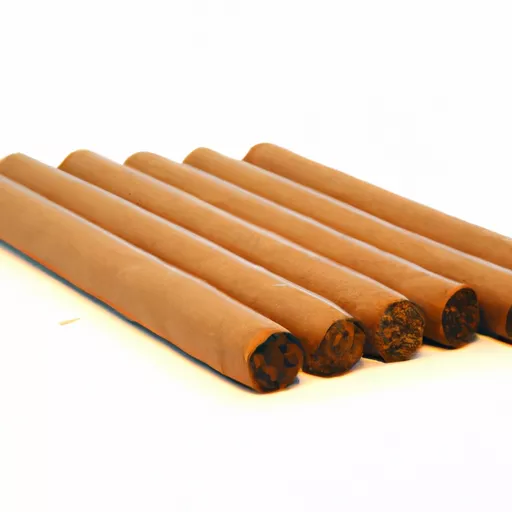
As a lover of cigars, I have always been intrigued by the smaller and more compact versions known as little cigars. These petite, hand rolled bundles of tobacco have a unique charm and flavor that sets them apart from traditional cigars. In this article, I will delve into the world of little cigars and explore their history, flavors, and popularity among cigar aficionados.
Little cigars, also known as cigarillos, first originated in Europe in the early 19th century. They were created as a way to make use of leftover scraps of tobacco from larger cigar production. They were initially marketed as a cost-effective alternative to traditional cigars, as they typically used cheaper tobacco and were rolled with a machine instead of by hand.
Today, little cigars are produced all around the world, with some of the most popular brands coming from the Dominican Republic, Honduras, and Nicaragua. They come in a variety of sizes and flavors, with some even infused with different flavors like vanilla, cherry, or chocolate. However, the most common flavors are natural tobacco and sweet, which have a slight hint of vanilla.
One of the main differences between little cigars and traditional cigars is their size. Little cigars are typically smaller in length and diameter, making them the perfect choice for those who don’t have the time to smoke a full-sized cigar. They also come in a convenient and portable packaging, ideal for on-the-go smoking.
However, don’t let their size fool you. Little cigars may be small, but they are packed with flavor and offer a complex smoking experience that rivals that of traditional cigars. Due to the use of machine rolling, little cigars have a more consistent burn and draw, leading to a smoother smoking experience. This also means that little cigars are generally more affordable than traditional cigars, making them a great option for those on a budget.
Another aspect that sets little cigars apart is their packaging. While traditional cigars are often packaged in wooden boxes, little cigars are usually sold in packs of 20 or 25. This makes it easier to try different flavors without committing to a larger box. Some brands even offer resealable packaging, ensuring that your little cigars stay fresh even after opening the pack.
When it comes to lighting a little cigar, the process is the same as with a traditional cigar. You can use a regular lighter, but some purists prefer using matches as it adds a unique flavor to the cigar. Just like with traditional cigars, it’s important to wait until the tobacco is fully lit and emitting a red glow before taking your first puff.
Due to their size and lower cost, little cigars have become increasingly popular among casual smokers or those looking for a quick and affordable smoke. However, they have also gained a loyal following among cigar enthusiasts who appreciate their unique flavors and convenience.
In recent years, little cigars have faced some controversy, with some health organizations claiming that they are just as harmful as traditional cigars. While it is true that little cigars do contain tobacco, just like their bigger counterparts, they are rolled with a wrapper that is thinner and contains less tobacco. Additionally, many little cigars have filter tips, which can reduce the amount of smoke inhaled. As with any tobacco product, moderation is key to ensuring the safest smoking experience.
In the end, little cigars offer a unique and satisfying smoking experience, regardless of whether you’re a seasoned cigar aficionado or a casual smoker. Their small size, variety of flavors, and affordable price make them a great option for any occasion. So next time you’re looking for a quick smoke, why not give a little cigar a try? You might just be pleasantly surprised.